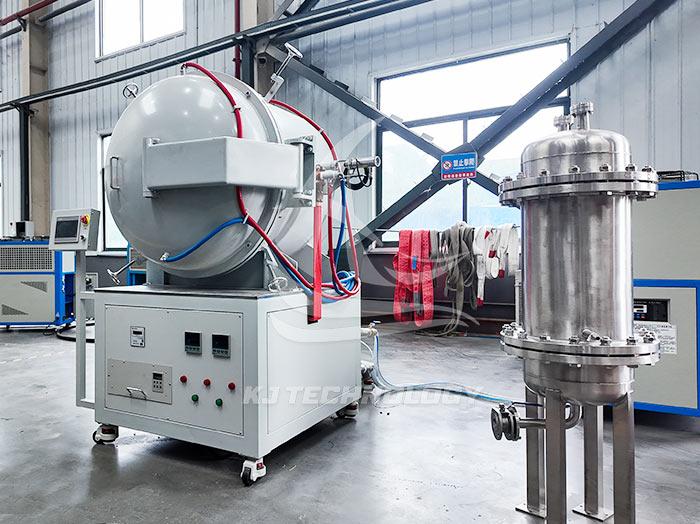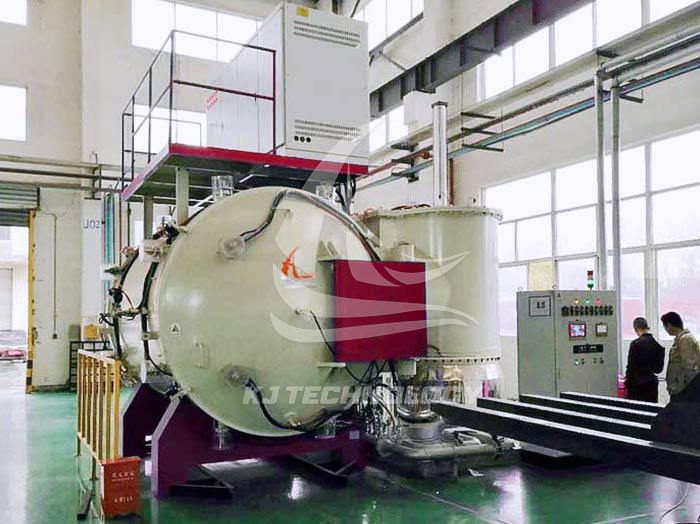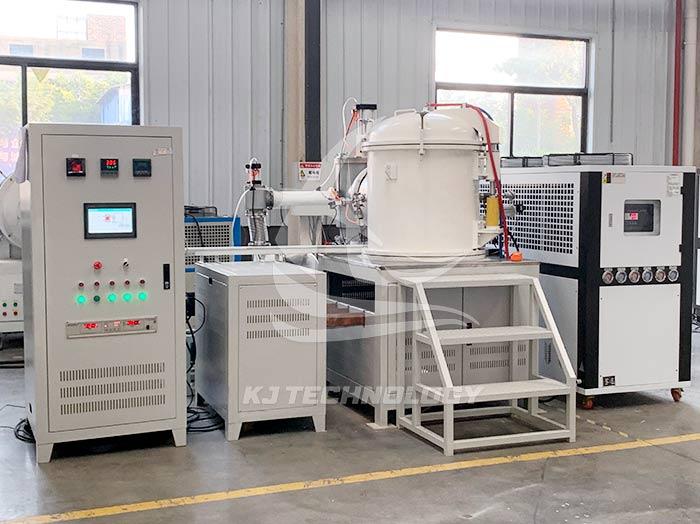Precautions for selecting industrial vacuum heat treatment furnaces
 05-08-2025 Author: KJ technology
05-08-2025 Author: KJ technology
The selection of industrial vacuum heat treatment furnaces requires comprehensive consideration of multiple factors to ensure that the selected equipment can meet the production process requirements, while also having good economy and reliability. Here are some key precautions:
technological requirements
Processing materials: Different materials have different requirements for vacuum heat treatment. For example, alloy steels such as high-speed steel and mold steel typically require high heating temperatures and precise temperature control to achieve good performance; Some non-ferrous metals such as aluminum and magnesium alloys have special requirements for heating speed and cooling methods. Therefore, the appropriate furnace type and heating system should be selected based on the specific materials being processed.
Processing technology: Clarify the required heat treatment processes, such as quenching, tempering, annealing, carburizing, nitriding, etc. Different processes have different requirements for the vacuum degree, temperature uniformity, heating speed, cooling method, etc. inside the furnace. For example, vacuum quenching requires rapid cooling to obtain good hardness and structure, which requires equipment to have an efficient cooling system; Vacuum annealing, on the other hand, places more emphasis on temperature uniformity and stability to ensure consistency in material properties.
production capacity
Workpiece size and weight: Select a vacuum heat treatment furnace with appropriate furnace size and load-bearing capacity based on the maximum size and weight of the workpiece to be processed in production. The furnace size should be large enough to accommodate the workpiece and ensure sufficient space for uniform heating and cooling inside the furnace. At the same time, the size and opening method of the furnace door should be considered to facilitate the entry and exit of the workpiece.
Production batch: If it is large-scale continuous production, it is necessary to choose furnace types with high automation and production efficiency, such as continuous vacuum heat treatment furnaces or multi station vacuum heat treatment furnaces, which can achieve continuous feeding and discharging of workpieces and improve production efficiency; For small batch production or single piece production, an intermittent vacuum heat treatment furnace can be chosen, which has high flexibility and relatively low cost.
equipment performance
Vacuum degree: Select the appropriate vacuum degree range according to the requirements of the heat treatment process. Generally speaking, for the processing of high-precision and high-performance materials, a high degree of vacuum is required to prevent oxidation, decarburization, and other phenomena during the heating process, ensuring the quality of heat treatment. For example, in the vacuum quenching process, a vacuum degree of 10 ⁻³ -10 ⁻⁵ Pa is usually required.
Temperature uniformity: Temperature uniformity is one of the important indicators for measuring the performance of vacuum heat treatment furnaces. A uniform temperature distribution can ensure that all parts of the workpiece receive the same heat treatment effect, improving the consistency of product quality. Generally, the temperature uniformity inside the furnace is required to be between ± 5 ℃ and ± 10 ℃. For some high-precision processes, the temperature uniformity requirement is even higher.
Heating and cooling rates: Select equipment with appropriate heating and cooling rates according to process requirements. Rapid heating can improve production efficiency, but for some large or complex shaped workpieces, excessive heating speed may cause excessive thermal stress on the workpiece; The cooling rate directly affects the structure and properties of the workpiece. For example, the quenching cooling rate must be fast enough to obtain martensitic structure, while the tempering cooling rate is relatively slow.
Equipment reliability and maintainability
Brand and manufacturer reputation: Choose vacuum heat treatment furnaces produced by well-known brands and manufacturers with good reputation. Their equipment usually has high quality standards in design, manufacturing processes, material selection, etc., and the reliability and stability of the equipment are good. You can understand the manufacturer's reputation and product quality by consulting their production qualifications, user evaluations, performance cases, and other methods.
After sales service: Good after-sales service is an important guarantee for ensuring the normal operation of equipment. When selecting, it is important to understand whether the manufacturer can provide timely and effective after-sales service, including equipment installation and commissioning, training, maintenance, and parts supply. Manufacturers should have a professional technical service team that can quickly respond and solve problems when equipment malfunctions.
Energy consumption and operating costs
Energy types: The energy types of vacuum heat treatment furnaces mainly include electricity, gas, etc. Electric heating has the advantages of fast heating speed, precise temperature control, and environmental friendliness, but the operating cost is relatively high; Gas heating has lower costs, but the temperature control accuracy and cleanliness are relatively poor. Choose the appropriate energy type based on the local energy supply situation and production cost requirements.
Energy consumption indicators: The energy consumption indicators of different models and specifications of vacuum heat treatment furnaces vary. When selecting equipment, it is necessary to compare the energy consumption data of different devices and choose the equipment with lower energy consumption to reduce production and operating costs. At the same time, it is possible to consider selecting devices with energy-saving functions, such as using intelligent control systems, optimizing heating element layouts, and other technologies, to improve energy utilization efficiency.








